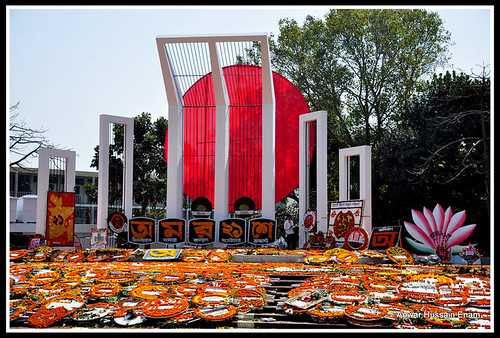
The United Nations' (UN) International Mother Language Day yearly celebrates mother tongue miscellany and diversity universally on February 21. It also keeps in mind events for example the killing of four students on February 21, 1952, because they fought to formally bring into play their mother language, Bengali, in Bangladesh. Its ceremonial was also officially known by the United Nations General Assembly in its declaration establishing 2008 as the International Year of Languages. International Mother Language Day is observed yearly by UNESCO member states and at its command centre to encourage linguistic and cultural assortment and multilingualism. International Mother Language Day is a civic holiday in Bangladesh, where it is also known as Shohid Dibôsh, or Shaheed Day. It is a worldwide adherence but not a public holiday in other parts of the globe.
History of International Mother Language Day
At the division of India in 1947, the Bengal region was divided as per the major religious conviction of the population. The western parts became the component of India and the eastern part turn out to be a state of Pakistan known as East Bengal and afterwards East Pakistan. Nevertheless, there was economic, educational and lingual chafing between East and West Pakistan.These anxieties were evident in 1948 when Pakistan's administration declared that Urdu was the only nationalized language. This ignited remonstrations amid the Bengali-speaking mainstream populace in East Pakistan. The government banned the disputes but on February 21, 1952, students at the University of Dhaka and other campaigners prepared for a protest. Later on that day, the police opened fire at the protesters and killed four students. These students' demise in fighting for the right to use their mother language is now considered on International Mother Language Day.
The turbulence sustained as Bengali speakers protested for the right to use their mother language. Bengali became a legitimately documented language in Pakistan on February 29, 1956. Subsequent to the Bangladesh Liberation War in 1971, Bangladesh developed into a sovereign country with Bengali as its authorized language.
On November 17, 1999, UNESCO stated publicly February 21 to be International Mother Language Day and it was first observed on February 21, 2000. Every year the revels around International Mother Language Day focus on an exacting subject.
International Mother Language Day Events and Activities
On International Mother Language Day the UN's Educational, Scientific and Cultural Organization (UNESCO) and other UN organizations partake in proceedings that encourage linguistic and cultural variety. They also cheer natives to keep up their awareness of their mother language while education and using more than one language. Governments and non-governmental associations may use the day to make known strategies to promote language learning and hold up language diversity.In Bangladesh, February 21 is the anniversary of an essential day in the country's history. Public lay flowers at a Shaheed Minar (martyr's monument). They also buy glass bangles for themselves or female associations; eat a merry meal and arrange parties; and reward prizes to literates or host literary contests. It is a time to commemorate Bangladesh’s ethnicity and the Bengali language.
The Linguapax Institute, in Barcelona, Spain, aspires to protect and encourage linguistic assortment worldwide. The association awards the Linguapax Prize on International Mother Language Day every year. The award is for those who have made exceptional work in linguistic diversity or multilingual learning.
Emblem
The Shaheed Minar (martyr's monument) in Dhaka, Bangladesh, pays respect to the four protesters murdered in 1952. There have been three adaptations of the monument. The first adaptation was constructed on February 22-23 in 1952 but the police and army shattered it within a few days. Erection of the second adaptation started in November 1957, but the beginning of martial law stopped erection work and it was smashed at some stage in the Bangladesh Liberation War in 1971.The third adaptation of the Shaheed Minar was constructed to identical strategy as the second version. It is made up of four erected marble frames and bigger double marble edges with a skewed top segment. The frames are build from marble and are positioned on a stage, which is raised about four meters (14 feet) above the ground. The four frames stands for the four men who died on February 21, 1952, and the double frame symbolizes their mothers and country. Imitations of the Shaheed Minar have been built globally where citizens from Bangladesh have established themselves, chiefly in London and Oldham in the United Kingdom.
An International Mother Language Day memorial was constructed at Ashfield Park in Sydney, Australia, on February 19, 2006. It comprises of a block of slate build up vertically on an elevated podium. There are stylized engravings of the Shaheed Minar and the world on the facade of the stone. There are in addition, the words "We will remember the martyrs of 21st February" in English and Bengali and words in five alphabets to symbolize mother tounges on five continents where public exists.

3 comments
Way cool! Some extremely valid points! I appreciate you penning this write-up
and also the rest of the site is really good.
My web page - transfer news man utd 2011
Highly energetic post, I liked that a lot. Will there be a part 2?
Feel free to surf my blog post ; perfumes originales
Excellent article! We will be linking to this particularly great content on our
website. Keep up the great writing.
Feel free to visit my homepage pizza games now
Post a Comment